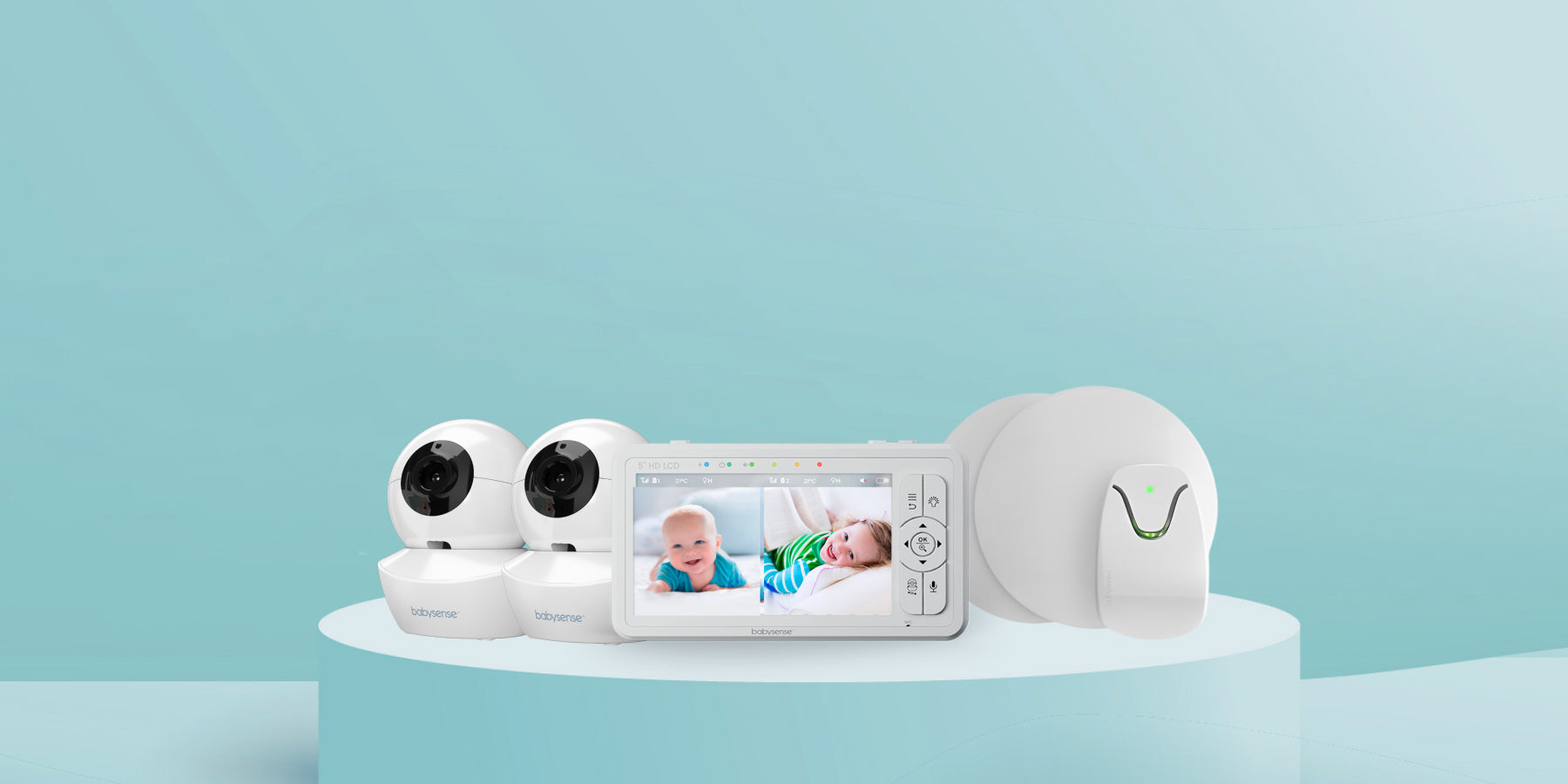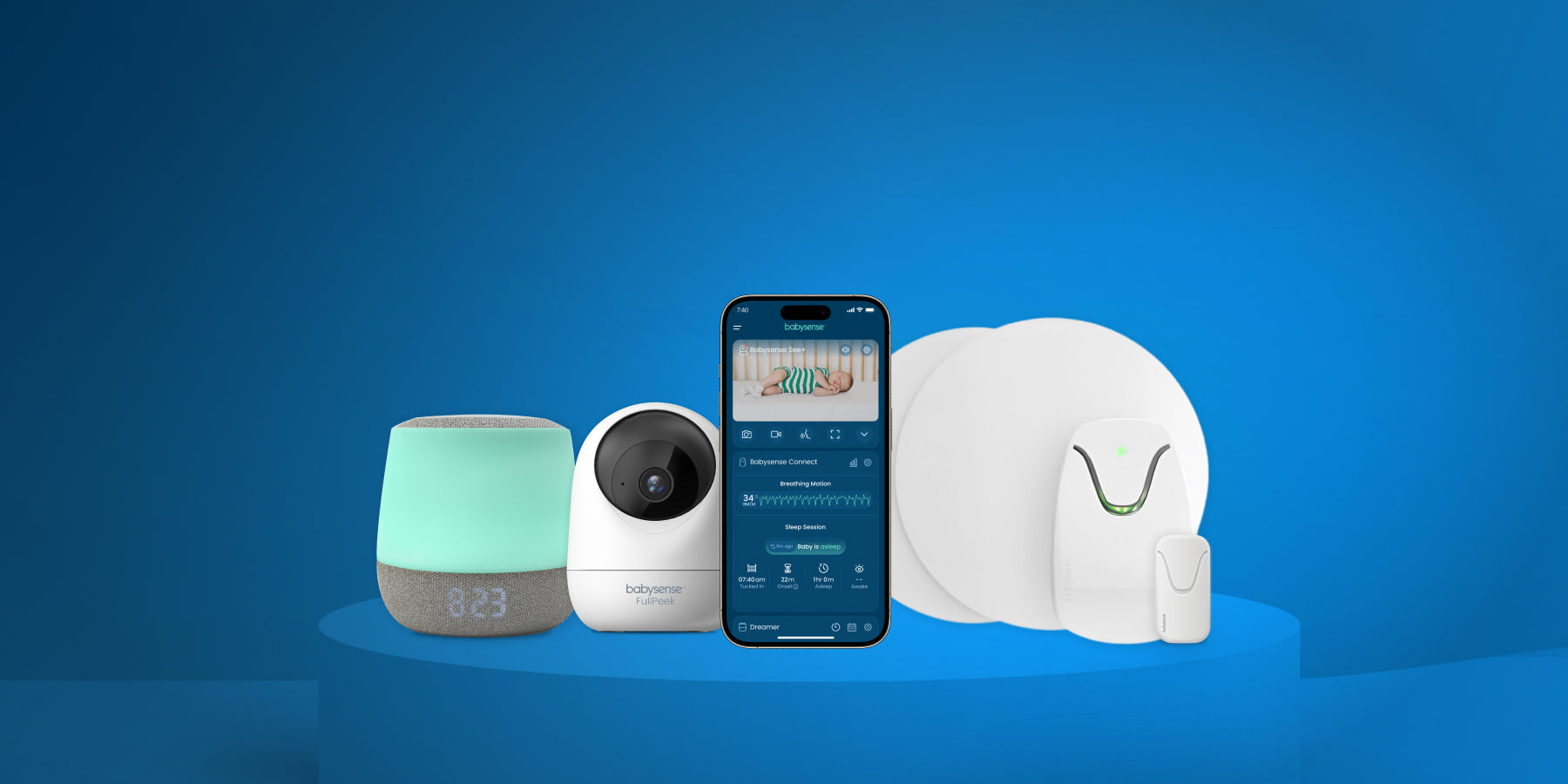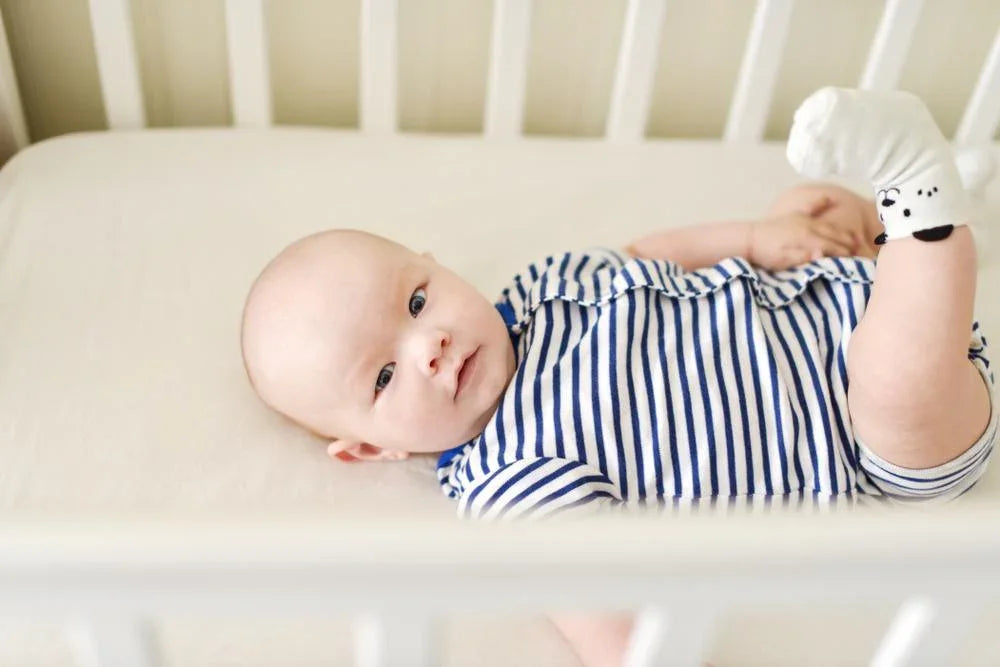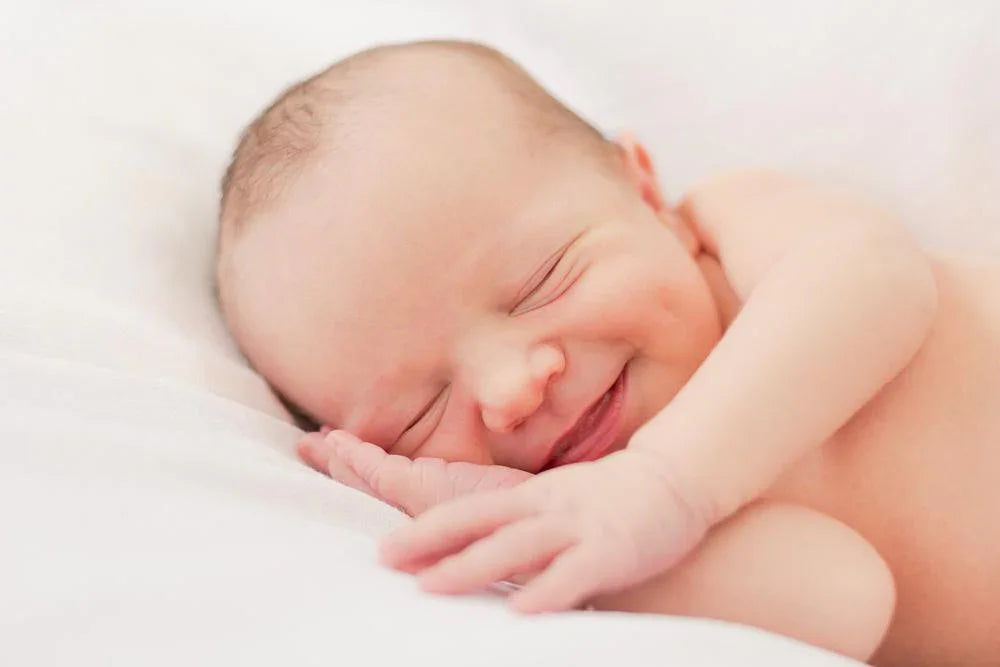Our first instinct as parents is to keep our babies as warm as possible, especially when the temperatures drop in wintertime. We might get ideas in our heads about huge fleece blankets or fluffy onesies perfect for Instagram.
Knowing how to dress your baby for sleep in winter is vital to their wellbeing, and you can walk a fine line between overheating them and keeping them comfortable.
How Many Layers Should My Baby Wear to Bed?
Many books and articles about babies advise parents to dress their baby in one more layer than the parent usually wears.
In some cases, this might be true, but once again, you can walk a fine line between comfort and too much heat. Get to know your baby a little and see what they are comfortable with. Do they get fussy when you dress them in more layers? Do they quiet down a little?
Keep an eye on your baby and see what they like best.
What Materials Should My Baby's Sleep Clothes Come From?
Like we stated earlier, fleece might be an appealing fabric choice because of its softness and warmth. However, fleece can run the risk of overheating your baby.
Your baby's metabolism is constantly working as your baby grows during the night. Therefore, their bodies might tend to get warmer more easily. In that case, you want to use materials that breathe well and wash easily
Cotton and wool are comfortable materials for baby clothes for those reasons. Cotton is also pretty soft. Depending on your baby's age, you might want to only let them wear cotton or wool.
Check to see that your baby's clothes are pesticide-free and fit your baby snugly. Be wary of clothes that say they are flame-retardant, as some pediatricians question whether the chemicals in these clothes are thoroughly safe for babies. Instead, make sure the clothes fit snugly so they are less flammable.
What Kinds of Clothes Can My Baby Sleep in During Winter?
A classic onesie should work for most babies during winter.
Layers are the key to creating comfort for your baby. If your baby is still in swaddling clothes, look at how many layers it adds. You can always add a flannel crib sheet underneath your baby.
A short-sleeved onesie is appropriate for sleep as you can always add a long sleeved vest if needed. Fleece pants are also suitable, as long as an elastic waistband keeps them from slipping down and they fit snugly.
A sleep sack is another option for keeping your baby warm. It is loose enough that your baby can move their legs inside, but not so loose that your baby might turn over and suffocate inside it. You can either zip your baby into one or snap it around them, almost like a swaddling blanket.
Do not cover your baby with a blanket until they are at least 12 to 18 months old.
There is no clear-cut answer for how many layers your baby may need. Again, play around with different options and notice when your baby becomes uncomfortable.
How Can I Test My Baby's Body Temperature?
You can test your baby's body temperature in one of two ways.
Notice your child's behavior. If they are not settling down or are fussy, they might be too hot or too cold.
However, it might be easier to test your baby's body temperature by simply touching them.
Feel your baby's hands. A slight chill in the skin is okay, but more layers are necessary if it is cold to the touch.
Feel the back of your baby's nose and back of the neck. A cold nose indicates a cooler body temperature. If the back of your baby's neck is warm, there is nothing to worry about. However, you may need to peel back some layers if your baby is sweating.
If your baby looks flushed, they might be a bit too warm, too.
Keep in mind that your baby's hands are cooler than the rest of their body. The neck and tummy might be better means of gauging your baby's temperature.
What Temperature Should I Set My Baby's Room To?
Most experts recommend setting any room temperature between 68 and 72 degrees Fahrenheit. Your baby's room should be too cold rather than too hot.
If your baby gets too cold, they might wake up a lot more during the night and have trouble getting back to sleep. On the other hand, if they are too hot, their risks of sudden infant death syndrome (SIDS) increases.
You must be most careful with temperature when your baby is between 0 to 3 months old because they cannot regulate their body temperature during that time. If a baby becomes too hot or cold, they will use up a lot of energy to reach equilibrium, which can be pretty tiring but quite dangerous.
It’s worth noting that our video baby monitors also include temperature alerts so you can easily see the temperature of your little one’s room.
What If My Baby's Room has Drafty Windows?
You may not know this until your baby's first winter, but your baby's room might have drafty windows. Not only may that affect your heating bills, but it might throw a wrench in keeping your baby warm.
You can use blackout window shades, which not only keep your baby's room dark so they can sleep, but they will insulate the window to retain heat in the room.
Window panels, on the other hand, are a little more decorative while still insulating the window. You can buy models that look like regular window blinds, but you can also buy dark ones that shut out light for nap time.
Can I Put Anything in My Baby's Crib to Keep Them Warm?
As mentioned before, keeping your baby warm means only using onesies, sleep sacks, or a well-warmed room. You do not want anything loose in the crib, such as a pillow or blanket.
Blankets and pillows are not safe for babies under 12 months old. That is because they pose a suffocation risk if they move over your baby's face and inhibit their ability to breathe. That is also why, when you swaddle your baby, do not wrap them too loose or too tight. You want to stop them from moving reflexively and staying so they stay asleep, but comfort is still essential.
Will My Baby Need Fewer Layers If They Sleep in My Bed?
While sleeping alongside your baby is not a commonly recommended practice, you might not need as many layers in this scenario.
When your baby sleeps beside you, they share your body heat. In this case, your baby might only need a cotton sleeper or a long-sleeved bodysuit.
What Does the TOG Mean on Baby Clothes?
TOG stands for Thermal Overall Guide, which explains how many blanket layers a piece of baby clothing is worth, especially sleep sacks. In other words, the lower the rating, the lighter the clothing is, and the higher the rating, the heavier it will be.
Different ratings will work best at different times of the year. For example, clothes with ratings of 2.5 or above might work best for winter because they are padded and made with thicker materials. Clothing with ratings of 2.0 or below can either work all year round or only in summer because they have less padding and layers of fabric in them.
A sleep sack with a rating of .5 to 2 is meant for spring or summer use, meaning that the sleep sack is about .5 to 2 blankets thick. Bags rated 2 to 2.5 are for autumn and winter.
You might also find sleep sacks and other baby clothes with a 3.5 rating, which are meant exclusively for winter use.
.5 TOG: Made of a single sheet of cotton without any padding. This is as light as they come and should be worn when temperatures are above 75 degrees Fahrenheit.
1.0 TOG: Only lightly padded and made for temperatures between 64 and 75 degrees Fahrenheit.
2.5 TOG: These are padded and can get used at any time of year except when it gets hot in summer. Optimal use is between 59 and 70 (should this not read 64?) degrees Fahrenheit.
3.5 TOG: Only meant for use in winter since they are heavily padded. Only use in temperatures at or below 59 degrees Fahrenheit.
How Can I Dress a Swaddling Baby for Winter?
Swaddling is vital in stopping babies from reflexively flailing their arms and legs in sleep, which can awaken them. Swaddling blankets can prove to be an essential layer in keeping your baby warm, so you do not need many layers underneath one.
In most cases, a simple long-sleeved layer is all you need beneath a swaddling blanket. You will find these long-sleeved layers have TOG ratings of their own, so you can do the math as to what overall rating your baby's clothes have.
Similarly, you can also buy a tuck sheet for your baby's mattress. Keep in mind that a tuck sheet is not the same thing as a blanket. A tuck sheet gets tucked underneath your baby's mattress, giving them a layer of warmth that stays firmly in place. A blanket can roll around, get caught over your baby's face, and possibly cause suffocation. A tuck sheet presents no such dangers.
More Tips to Help Your Baby Sleep in Winter
- If your baby is too cold, they might refuse to eat. They might also become lethargic or difficult to wake. Always check for your baby's comfort before leaving them to sleep.
- Tempting though it is, do not cover your baby's feet or hands during sleep. They need those extremities free or untucked to get rid of extra body heat. Only use socks or footed onesies when they are awake.
- Stay away from onesies with hoods or hats. They are fine when your baby is awake or when you are taking them outside for a stroll. However, your baby cannot regulate body temperature until they reach 3 months, so keep these off their heads when they sleep.
- A hat might also slip off your baby's head and fall over their mouth, inhibiting their breathing. Again, save the hats for Instagram and keep them off your baby when they are sleeping.
- Make sure your baby sleeps on their back.
- It is a good idea to leave your baby slightly underdressed during sleep. That is not to say that you should skimp on layers. Test your baby's skin to see if they are at optimal temperature before leaving them to sleep.
- Lose the swaddle blanket once your baby starts to roll and switch to a wearable blanket or sleep sack instead.





